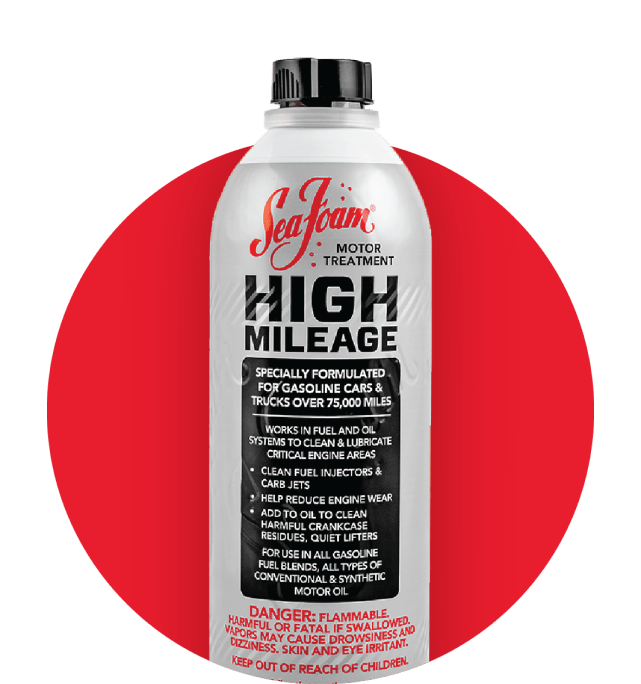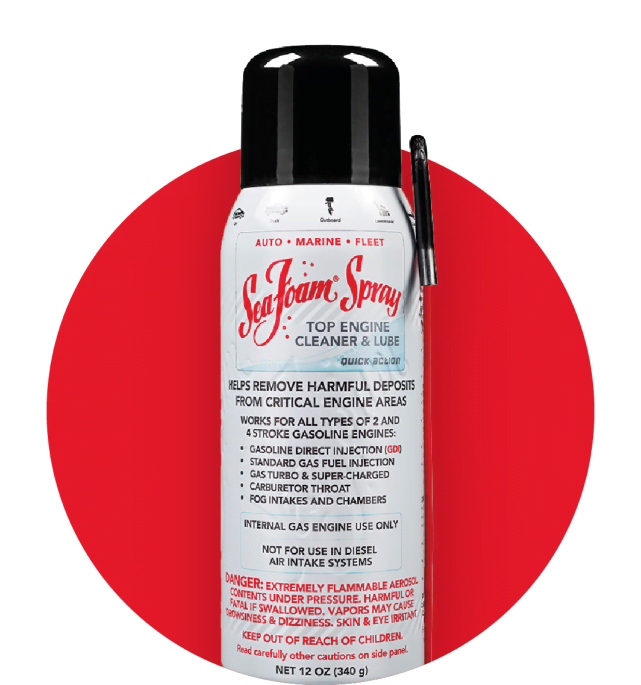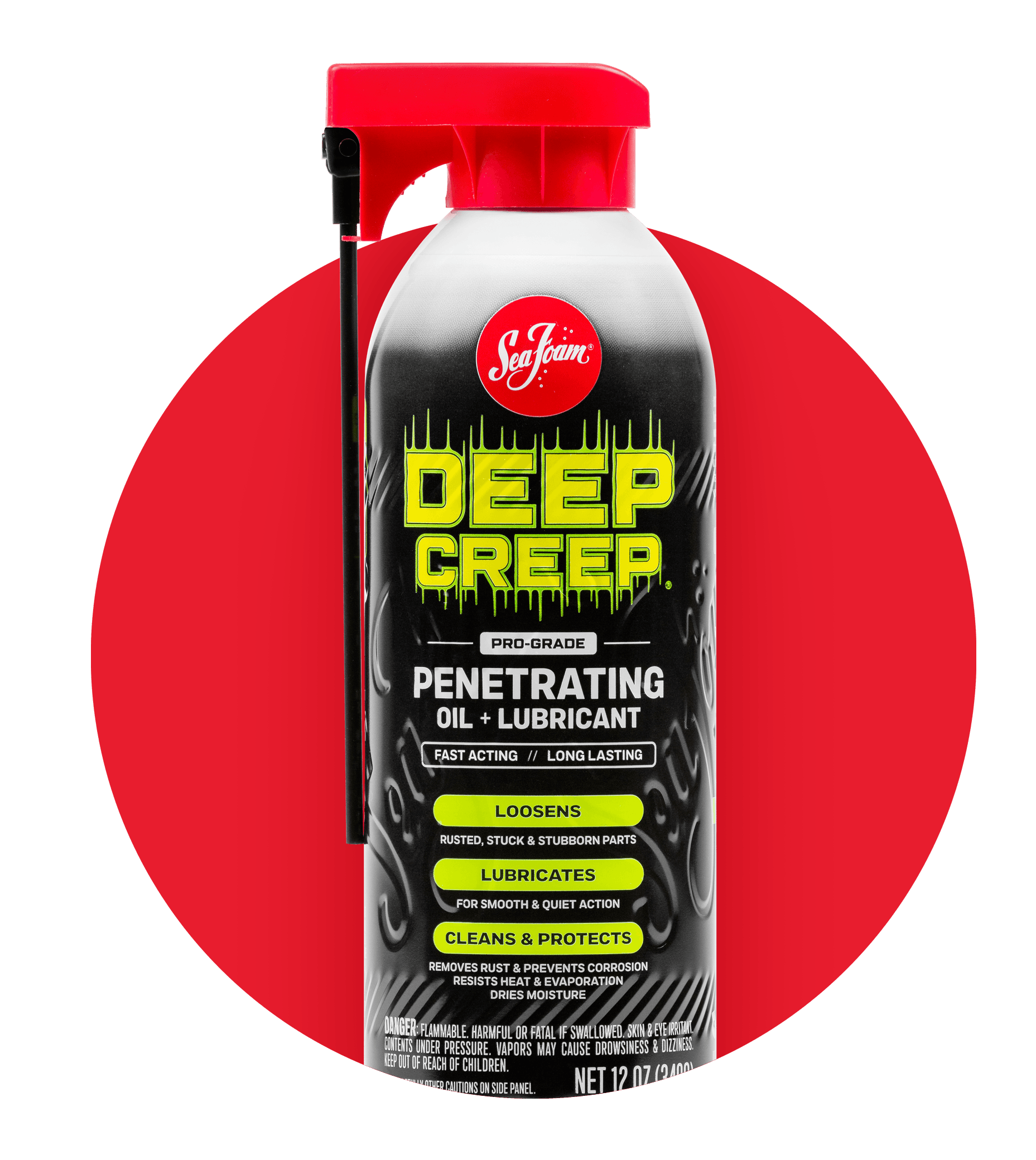HOW TO FIX OIL BURNING
Burning oil, generally speaking, describes oil that is entering your engine’s combustion chambers and being burned with the fuel-air mixture.
STOPPING THE
SMOKE
The problem could be as simple as piston rings sticking in the grooves because of built up carbon or gummy varnish. Incomplete combustion leads to residue building up on piston rings and the grooves they ride in. If rings get stuck in the groove, they won’t provide a good compression seal or scrape oil off the wall back into the crankcase, eventually causing blow-by and oil burning.
Sometimes, oil burning is caused by worn valve seals or guides, which simply need to be replaced.
If your vehicle is burning oil, a simple way to find out if the issue can be resolved without a teardown is using Sea Foam High Mileage Motor Treatment and Sea Foam Spray to break down gum, varnish, and residue, restoring your engine’s ability to manage oil consumption. Simply add Motor Treatment to the engine oil and fuel, and use Sea Foam Spray in the intake as directed to safely clean your pistons and rings of sticky deposits.
The buildup of heavier varnish and carbon restrictions that cause rings to stick can be prevented by treating your engine oil with Sea Foam High Mileage Motor Treatment 100 to 300 miles before each oil and filter change.
In addition to using High Mileage, you can run Sea Foam Spray through your engine’s intake or spray it directly into cylinder cavities to let pistons soak, cleaning rings from the top end. It will also clean intake valves, which is particularly important on gasoline direct injection engines.
In short, Jim says, take the simple steps to keep your engine’s key components clean and properly maintained, and you’ll not only avoid burning oil, but also extend the life of your vehicle and keep it on the road for many years.
Sea Foam Technical Director Jim Davis walks us through the common culprits of oil burn, how to prevent them, and what you can do to resolve problems if they are already present.
Automotive pistons typically have three rings that sit freely in small grooves, called lands, on the piston’s outer diameter.
The top two are compression rings that, as their name implies, maintain compression by sealing gasses in the combustion chamber, with the top ring handling most of the job. The second ring accounts for a lesser amount of compression control, while also helping with oil management.
The bottom ring is an oil control ring that scrapes most of the oil off the cylinder walls. The oil control ring is made up of three pieces—top and bottom scraper rings and a vented expansion ring that redistributes oil back into the crankcase through tiny holes in the piston skirt.
Over time, the buildup of heavy varnish and charred carbon deposits can cause problems for any of these rings.
“All rings have tension and they want to push outward,” Jim says. “But if they get stuck in the ring lands, they can no longer expand and maintain pressure around the cylinder.”
Stuck compression rings can lead to poor compression, misfires, oil contamination and a buildup in crankcase pressure that can force oil into combustion chambers. This “blowby” can also occur if an oil control ring is clogged with sticky varnish and unable to manage oil effectively. Blue smoke under acceleration is a good sign of a restricted ring problem. Beyond smoke, another strong indication of failing rings is higher than usual oil consumption, without any indication of an external leak.
The buildup of heavier varnish and carbon restrictions that cause rings to stick can be prevented by treating your engine oil with Sea Foam High Mileage Motor Treatment 100 to 300 miles before each oil and filter change. Specifically formulated for cars and trucks with over 75,000 miles, High Mileage will safely prevent varnish deposits from forming, or liquefy existing deposits. That means rings won’t be restricted, and other critical engine components, such as actuators, will remain clean and unobstructed.
Your engine’s positive crankcase ventilation (PCV) valve can also be a cause of burning oil.
The valve (though not present in some newer vehicles) routes small amounts of air and fuel that escape into the crankcase back through the intake and into the cylinders. A clogged valve can create a buildup in crankcase pressure, again causing oil blowby. Issues associated with stuck rings (oil contamination from combustion gases, for example) can lead to PCV problems.
In some cases a PCV valve can be replaced, but it’s better to understand the causes of contamination and prevent it in the first place. Using HIGH MILEAGE Motor Treatment in the crankcase is a sure way to prevent harmful restrictions that can lead to PCV problems.
Blueish smoke on startup is a telltale sign of worn valve seals or guides, Jim says.
“Say you park your car, you start it up the next morning, and there’s smoke coming out of the pipe. That is always—and I mean always—valve seals or valve guides,” he says. “Either the guide is worn or the seal is shot.”
When a seal or guide is bad, oil that’s left on the valve stem will drain down and sit on the valve head, or it will drip into the cylinder. Then when you crank up your car, that oil will burn, causing a puff of smoke that then subsides.
If seals are the problem, they will need to be replaced. If the guides are bad, you’ll need a valve job, which involves repairing and/or replacing valve guides and related components as needed.
HOW high mileage helps with oil burning
#seafoamworks
related
products
For motors of all shapes and sizes.



